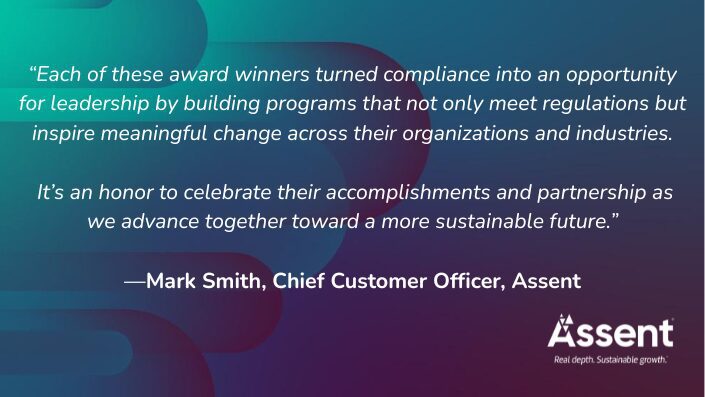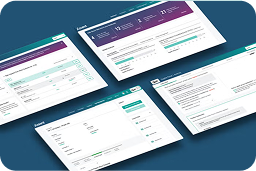The 2025 reporting deadline under Canada’s Fighting Against Forced Labour and Child Labour in Supply Chains Act (Bill S-211) is fast approaching. By May 31, 2025, in-scope companies must publish how they identified, assessed, and acted on forced and child labor risks in their supply chains over the last financial year.
This is the second year of reporting, and this time around, the stakes are higher. Reports will face deeper scrutiny and reporting entities won’t get a free pass for missing information.
We’ve already seen companies being questioned by Canadian authorities and receiving inquiries at the Canadian border. In some cases, this has snowballed into additional requests for information to clear customs. Goods can be detained because importers lack demonstrable labor due diligence.
If your business is in scope and manufactures, distributes, or imports goods on the Canadian market, this is not just a regulatory checkbox. It’s a test of whether your supply chain meets today’s global standards, and tomorrow’s even tougher expectations.
Forced Labor Crackdown: The Era of Leniency Is Over
The first reporting cycle under Bill S-211 gave companies some breathing room. The government, recognizing this was new ground, focused more on benchmarking than penalizing. But all signs indicate that won’t be the case moving forward.
Canadian regulators are signaling a shift from education to enforcement. Regulatory requirements are tighter, and that means risks are higher:
- Penalties of up to $250,000 CAD for non-compliance or false statements are now more likely to be applied
- Corporate officers, directors, and agents may also face personal liability
- Human rights organizations and journalists are watching closely; public reporting opens companies up to reputational risk in addition to financial and legal consequences
Manufacturers are especially under the microscope for risks of child labor in the supply chain. According to Public Safety Canada’s first annual report, 38.3% of reporting entities were from the manufacturing sector — the largest share of any industry.
As we’ve seen with other forced labor due diligence laws, there’s an uptick in scrutiny on shipments entering the country. Industry has yet to see if Canadian officials will go all in or implement lighter actions like putting companies on notice.
In 2024, Public Safety Canada released guidance for reporters clarifying a few points for 2025. It states that the Supply Chains Act does not cover companies producing only intangible goods, like software and insurance services. It also provides tips for avoiding common reporting errors, based on the challenges identified in the first year of human rights due diligence reporting. Assent recommends that all in-scope manufacturers review this guidance document for details on what to put in their report and advice on formatting.
Because the 2025 report covers progress made over the past year, this report is where manufacturers will be expected to show measurable improvements in their human rights supply chain due diligence program. With 2024 reports serving as a baseline, it will be very evident which companies took real action to combat forced labor risks and which treated this new regulation like just another compliance checkbox.
Part of a Global Trend in Supply Chain Human Rights
While S-211 is rooted in Canadian law, it’s aligned with a global movement toward supply chain transparency and sustainability. It’s a potential precursor to more stringent regulations like the EU Forced Labour Regulation.
The Government of Canada has also recognized that Bill S2-11 overlaps with other global supply chain human rights reporting requirements, such as the UK Modern Slavery Act of 2015. Companies in scope of Canadian forced labor reporting plus at least one other supply chain sustainability regulation are allowed to submit a single report that fully covers the requirements of both (or more).
Smart manufacturers will focus less on meeting the specific requirements of each supply chain sustainability regulation they’re in scope of, and more on creating a comprehensive supply chain sustainability management program that provides the foundation for proactive human rights management.
How to Strengthen Your Program
With the 2025 deadline fast approaching, now is the time to take action and move beyond checkbox compliance. The more you put into your program now, the better prepared you’ll be for the next wave of global sustainability requirements. So think of Bill S-211 as a strategic opportunity rather than just another hurdle in your reporting calendar.
- Codify your human rights policies. Add supplier requirements around labor practices, trafficking, and bribery and corruption into your code of conduct and have suppliers sign on.
- Engage your suppliers for declarations on forced labor, but also dig deeper into risk factors like working conditions and recruitment practices.
- Conduct indirect supplier screening on beneficial ownership, corporate relationships, and media mentions. Often, human rights risks can’t be detected by supplier self-declarations alone.
- Train your internal teams: From procurement to compliance, your employees need to understand what forced labor looks like and how to spot red flags. This is not only a best practice, it’s a requirement under Bill S-211.
- Automate supplier engagement: Collecting forced and child labor data is difficult, and most manufacturers don’t have a dedicated professional to handle these processes. Assent’s platform automates supplier outreach and data rollup, making it easier to see your progress and current risks.
The Countdown Is On: Get Started With Assent
The first public report under S-211 offered a revealing snapshot of where Canadian companies stand:
- 38.2% of all filers acknowledged risks of forced or child labor in their supply chains
- 22.4% had not yet begun risk identification activities
This shows that many manufacturers are still in the early stages of supply chain sustainability management, and the risk of non-compliance is tangible.
It’s not easy for manufacturers with complex supply chains to get a robust program up and running without help. Assent’s forced labor solution can help kickstart due diligence with automated surveys, supplier education, a reporting dashboard, and AI-enhanced supplier screening tools. And our dashboards and audit trails can provide traceable proof of due diligence to help meet the reporting requirements of Canada’s Fighting Against Forced Labour and Child Labour in Supply Chains Act.
Don’t wait until you get pulled over to have proof of due diligence. Put a process in place today, with strong supply chain engagement, to ensure you’re not connected to high-risk entities and that you have proof of due diligence readily available if a challenge arises. If you don’t have a system in place, implementing Assent’s Forced Labor solution is a great first step to show concrete measures to remediate human rights risks. Talk to us to get started.
FAQ: Canada’s Bill S-211
The first full reporting cycle under Canada’s Fighting Against Forced Labour and Child Labour in Supply Chains Act (Bill S-211) has now passed. This FAQs explains what comes next for manufacturers, what regulators are watching for, and how to strengthen your program before the next reporting deadline.







